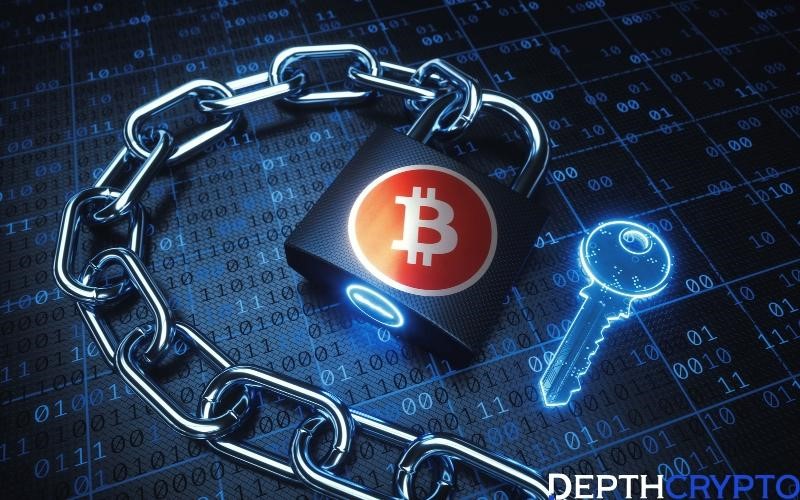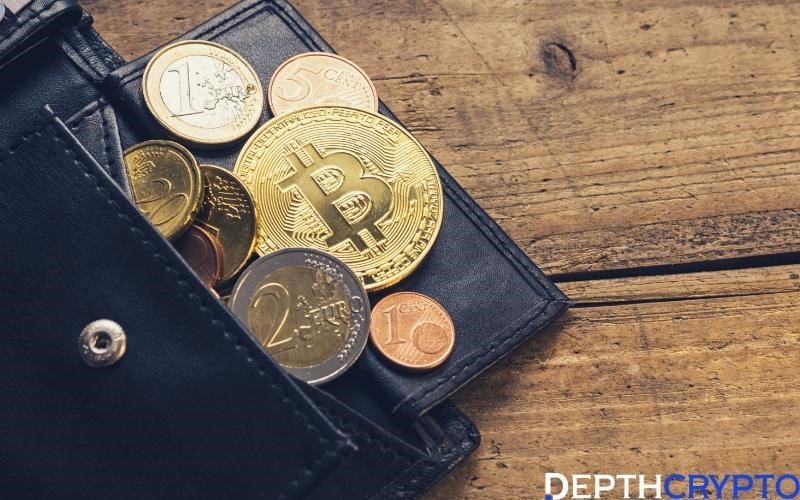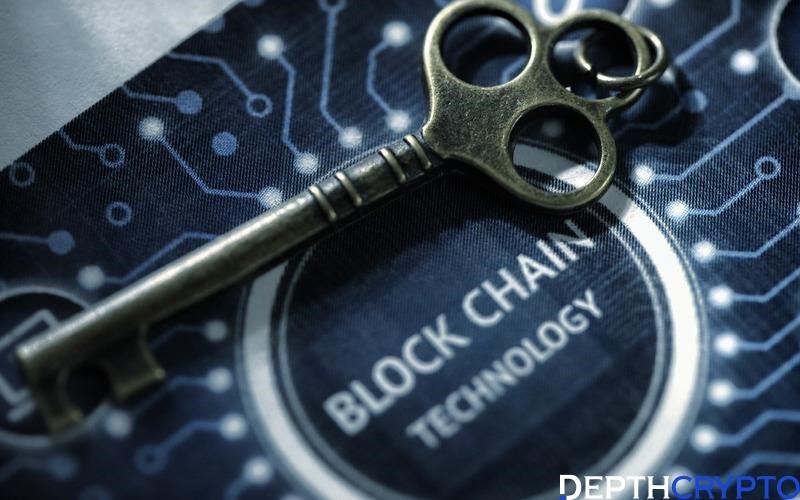
How often have you heard of cryptocurrency?
Let me guess, as often as you scroll past a crypto enthusiast.
With cryptocurrency going mainstream, you probably come across crypto at least three out of seven times.
As it seems, there’s always jaw-dropping or stomach-churning crypto news breaking the internet that piques your curiosity.
If you’re “crypto curious” and want to learn before you dive, you’re in the right spot.
In this article, we go all out on Bitcoin — the oldest, largest, and most versatile cryptocurrency.
Read on as we unravel this digital currency. What is it? How does it work? Pros and cons, etc.
Bitcoin’s humble beginning

Bitcoin was born during one of the most chaotic financial environments in U.S. history [1]. Here’s how:
From mid-2007 to 2009, a global financial crisis (GFC) [2] affected banks, central governments, and the overall financial markets.
During this period, suspicion of central authorities like banks and governments was at its highest.
Around this time, an anonymous person or group under the pseudonym Satoshi Nakamoto [3] thought of a trustless electronic payment option that bypassed central authorities.
In 2008, Satoshi Nakamoto released the original copy of what will later be known as Bitcoin’s white paper. The white paper detailed the peer-to-peer Blockchain technology behind Bitcoin and cryptocurrencies in general.
On January 3, 2009, Satoshi Nakamoto officially mined the first Bitcoin block, the genesis block [4]. Thus, bringing Bitcoin to life.
Within the first seven months of launching Bitcoin, Nakamoto reportedly mined (created and released into circulation) about 1.1 million Bitcoins. Meanwhile, by design, only 21 million Bitcoins will ever exist.
Mining is the process of creating new Bitcoins and releasing them into circulation. As of November 19, 2022, more than 19 million Bitcoins have been mined and are in circulation, leaving less than 2 million Bitcoins to be mined.
Bitcoin mining difficulty is designed to increase while the reward for mining one Bitcoin halves every four years.
During Bitcoin’s early years, you get 50 BTC as a reward for successfully mining Bitcoin.
In 2012, the block reward was halved to 25 BTC. In 2016, it became 12.5 BTC. And on May 11, 2020, the block reward was reduced to 6.25 BTC.
The next halving is expected in 2024, when the block reward will decrease to 3.125 BTC. It’ll further reduce to 1.5625 BTC in 2028.
As of Nov. 2022, each successful Bitcoin mine earns you an equivalent of (6.25 BTC × $16,624.74) $ 103,904. It takes about 10 minutes to mine one BTC.
The first real-world Bitcoin transaction happened on May 22, 2010 [5], when Laszlo Hanyecz exchanged 10,000 Bitcoins (BTC) for two pizzas in Florida. This day marks history as Bitcoin Pizza Day, celebrated yearly by crypto freaks.
One Bitcoin’s (BTC) price went from $.09 in July 2010 to an all-time high of $67,566.83 on November 8, 2021. And as of November 19, 2022, Bitcoin goes for $16,624.74 apiece [6].
What is Bitcoin?
Bitcoin is a decentralized digital coin or asset used as a medium of payment across the internet. It uses cryptography to manage its creation and circulation.
You can sell and buy Bitcoin, pay for transactions with Bitcoin, exchange, or invest in it without third-party intervention. However, most people prefer to invest in Bitcoin because it’s seen as a store of value and often regarded as digital gold.
How does Bitcoin’s Blockchain work?

Bitcoin’s Blockchain is a public ledger shared across several computer networks, otherwise called nodes. Each node has a copy of transaction history piled in blocks and linked together.
For clarity, if a hundred transactions were waiting to be verified on the Bitcoin Blockchain.
For each transaction, computers (also known as nodes or miners) compete to be the first to solve cryptographic puzzles. The first miner to find the answer verifies a transaction and earns 6.25 BTC as a reward.
After which other computers will agree if the data verified is accurate. Once a consensus is reached, the transaction is added to an opened block.
The process continues with miners competing to solve puzzles, validating transactions, earning block rewards, and including data to the opened block until the block’s capacity is filled with transaction records.
Once this happens, the block is sealed and linked to other blocks forming a chain. Thus, once a block is mined, transactions recorded are tamper-proof and irreversible.
Bitcoin’s consensus mechanism (or mining process) is the proof-of-work consensus mechanism. Due to the intense difficulty level and computational power required to solve puzzles, computers in the network consume an insane amount of energy.
In comparison, the Bitcoin mining or proof-of-work model consumes an estimated 150 terawatt-hours of electricity annually [7] — more than the entire country of Argentina, with 45 million population.
What are Blockchain keys?

When it comes to securing Bitcoin and other cryptocurrencies, there are three distinct keys — a random string of alphanumeric characters in your wallet, such as:
1. Public keys:
The public key is like your home or email address. It’s shared on the Blockchain, which anyone can view. Like your email address, you can only receive money via your public key (wallet address).
2. Private keys
Your private key is like your email password. It can be a 256-character long binary code, a QR code, or a 64-digit hexadecimal code. Your private keys give you access to your wallet. Money can only be transferred to another wallet with private keys.
It’s crucial to keep your private keys extremely private. You may lose your Bitcoin wealth if the secret keys fall into the wrong hands.
3. Seed phrase
The seed phrase is like a master key. It’s a unique bunch of 12 to 24 words long. The seed phase serves as a recovery tool (helps recover your private keys) when you misplace your private keys. You should guard your keys and keep them safe offline.
Bitcoin Wallets

Like your physical wallet or bank account, crypto wallets are software or hardware that hold or keep your Bitcoin and crypto assets safe.
With your wallet, you can view and manage your fund. The main types of crypto wallets are:
1. Custodial
If you choose a custodial wallet, your Bitcoin assets will be in the care of third parties, such as exchanges like Binance, Gemini, and Coinbase. Because they hold your keys, they wield absolute control over your funds.
2. Noncustodial
With a non-custodial wallet, you’re entirely responsible for securing your bitcoin. Your keys are in your custody. You have absolute control over your funds and can make transactions any time of the day.
3. Cold wallet
You can use a cold wallet whether you use custodial or noncustodial wallets. A cold wallet stores your Bitcoin and crypto assets offline. It’s often like a USB drive, which you connect to the internet only during use. Examples are ledger, Trezor, etc. Although cold wallets offer impressive security, they’re not beginner friendly.
4. Hot wallet
In contrast, hot wallets store your Bitcoin on platforms connected to the internet in either of these formats:
- Crypto wallet app
- Desktop software
- Web version
Hot wallets are easy to use, but they are exposed to phishing, hacks, and cyber crimes.
How Bitcoin transactions work

To send a Bitcoin, you must insert the recipient’s address on your wallet app, type (to avoid errors, copy and paste) your private keys and consent to the transaction fee, and click on send!
Once that’s done, the transaction goes to queue in the Bitcoin mempool (a transaction waiting room) for its turn to be verified and validated by miners. Since Bitcoin mining takes 10 minutes, the transaction could take about 7-30 minutes to leave the waiting room (mempool).
Besides, you must have agreed to the minimum transaction fees for miners to verify your transaction. Don’t be surprised why transactions with the highest fees are processed first.
From a miner’s perspective, transaction fees help them get side revenue for their high-maintenance equipment set-up.
If the transaction fee criterion is accurate, your transaction is verified and added to a block. Once miners reach a consensus and validate the data within a block, the block is sealed and mined.
When that is done, the recipient will receive the money, and your wallet balances will be updated. And the circle continues.
Bitcoin’s pros and cons
Pros:
- Bitcoin is a highly accessible and versatile currency. It is also liquid.
- it’s free from regulations and third-party interference.
- Bitcoin is a store of value with the potential for high returns.
- Even though its operations are public and transparent, Bitcoin offers users anonymity.
- Bitcoin’s limited supply will cause the price to hike up, which is good for long-term investors.
Cons:
- Bitcoin, like all speculative assets, is highly volatile.
- It lacks legal backing and security.
- Because it’s tamper-proof, you can’t correct a transactional mistake.
- It’s not acceptable worldwide.
Conclusion
Before you venture into the crypto world, ensure due diligence by understanding how Bitcoin works, your expectations and risks, how accessible the market is, and the best ways to buy cryptocurrency.
FAQ
Can you convert Bitcoin to cash?
Of course, yes. You can sell your Bitcoins on exchanges and convert them to cash. You can also use Bitcoin ATMs.
Is Bitcoin worth investing?
It depends on your risk profile. Bitcoin’s price has been fluctuating amid the bear market. Moreover, it’s a speculative market. Seek independent financial advice to know what works best for you.
Can you mine Bitcoin on your phone?
You can try. But the likelihood of solving cryptographic puzzles ahead of more sophisticated mining equipment with your phone is low.
Do banks accept Bitcoin?
Bitcoin is yet to go mainstream as a legal tender. However, some banks allow you to buy Bitcoin and other digital assets.
What is the minimum amount to invest in Bitcoin?
It’s generally advisable to invest 5% in your portfolio. However, with as low as $10-50 dollars, you can invest in Bitcoin by buying Satoshi— Bitcoin’s diminutive.
[2] The Global Financial Crisis | Explainer | Education. (n.d.). Reserve Bank of Australia. https://www.rba.gov.au/education/resources/explainers/the-global-financial-crisis.html
[3] Wikipedia contributors. (2022a, October 15). Satoshi Nakamoto. Wikipedia. https://en.m.wikipedia.org/wiki/Satoshi_Nakamoto
[4] Wikipedia contributors. (2022h, November 19). History of bitcoin. Wikipedia. https://en.m.wikipedia.org/wiki/History_of_bitcoin
[5] Business Today Desk. (2022, June 17). Two pizzas for Rs 2,260 crores! Twelve years of Bitcoin Pizza Day. Business Today. https://www.google.com/amp/s/www.businesstoday.in/amp/crypto/story/two-pizzas-for-rs-2260-crores-12-years-of-the-bitcoin-pizza-day-334204-2022-05-19
[6] Jakobson, L. (n.d.-c). Bitcoin price today, BTC to USD live, market cap, and chart. CoinMarketCap. https://coinmarketcap.com/currencies/bitcoin/historical-data/
[7] Hinsdale, J. (2022, July 28). Cryptocurrency’s Dirty Secret: Energy Consumption. State of the Planet. https://news.climate.columbia.edu/2022/05/04/cryptocurrency-energy/
